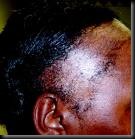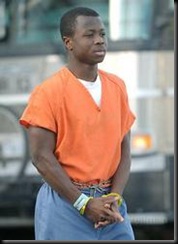This weekend; my wife and I watched “Good Hair” starring Chris Rock. In the movie Rock visits beauty salons, hairstyling competitions, science labs and India to get various perspectives on the hair weave industry. He also interviews a bevy of celebrities, salon owners and their clients.
At first I thought this was just another low budget “let’s watch this because nothing else is good out” movie but I was wrong—the movie was actually entertaining and enlightening. It also got me to thinking. Here are just a couple of tidbits I picked up from the movie:
- Black hair care is a $9 billion industry.
- 30% to 34% of all hair products in the U.S. are purchased by black women. And weaves, worn by women of all ethnicities but especially by black women, account for 65% of hair-care revenue!
- The hair comes from a variety of sources: India, Asia, Russia, Brazil, Mongolia and Malaysia.
- There are only a handful of black hair care product manufacturers—most are international conglomerates.
- Korean vendors have cornered the market on the sale and distribution of hair weave through their beauty shops.
But I bet there’s something you didn’t know… and it wasn’t discussed in the movie. Did you know that your quest for good hair could be contributing to a rising health problem among African American women? Well it is and it’s called traction alopecia.
What is Traction Alopecia?
Traction alopecia is loss of hair—most commonly in the outer regions of the forehead and face—caused by excessive pulling of the hair. Has your beautician ever mentioned this risk?
What Causes Traction Alopecia?
Traction alopecia is caused by damage done to the hair follicle by continual pulling and tight tension for very long periods to the hair. It occurs in people who wear tight braids, especially dreadlocks that lead to pulling, tension and breaking of hair. Of note, many men suffer from this problem too. In addition chemical processing of your hair can cause traction alopecia that can be irreversible if prolonged damage has occurred.
This type of hair loss has been on the rise among black women and children. Yes kids, the movie “Good Hair” asked several women how young were their children when they first braided their hair—one woman said her child was three! I believe on of the beauticians said a mother asked her to add extensions to and braid the hair of a two-year-old! How young was your child when you first had his or her hair braided?
What Are The Treatment Options?
Much of that depends on how long the problem has been going on. If you’ve had this problem for a long period of time your only option may be a hair transplant. Your Dermatologist may also try Minoxidil (Rogaine) or Finesteride. But I believe the best option is to opt out of this hairstyle. I mean, is it really worth you loosing your natural hair?
This issue has really hit home in my family—my wife has just been diagnosed with this disease.
“A women’s hair is her glory” or so the old saying goes. This is a disturbing trend that’s perfectly preventable—just wear your own hair. After all, do you want to look like this?
How about it; are you suffering from this disease?
How are you dealing with it?
What treatment option(s) have you tried?
Have you had success with any particular dermatologist?















